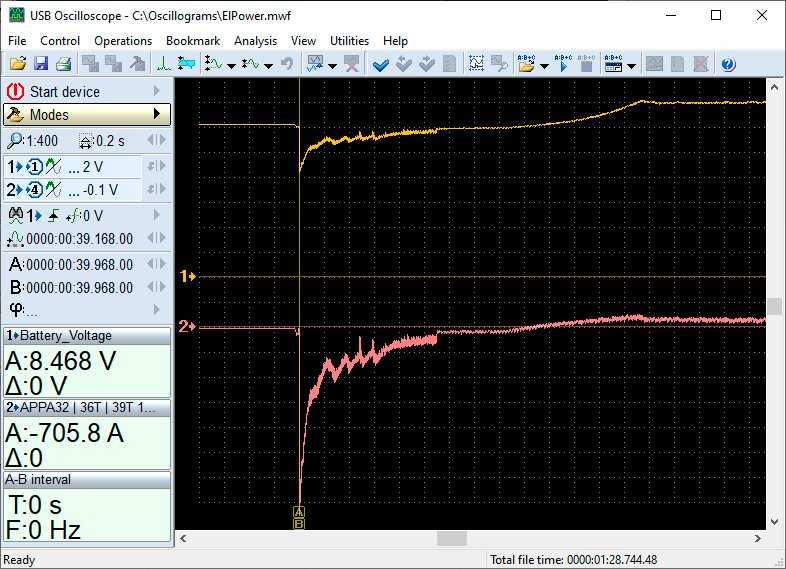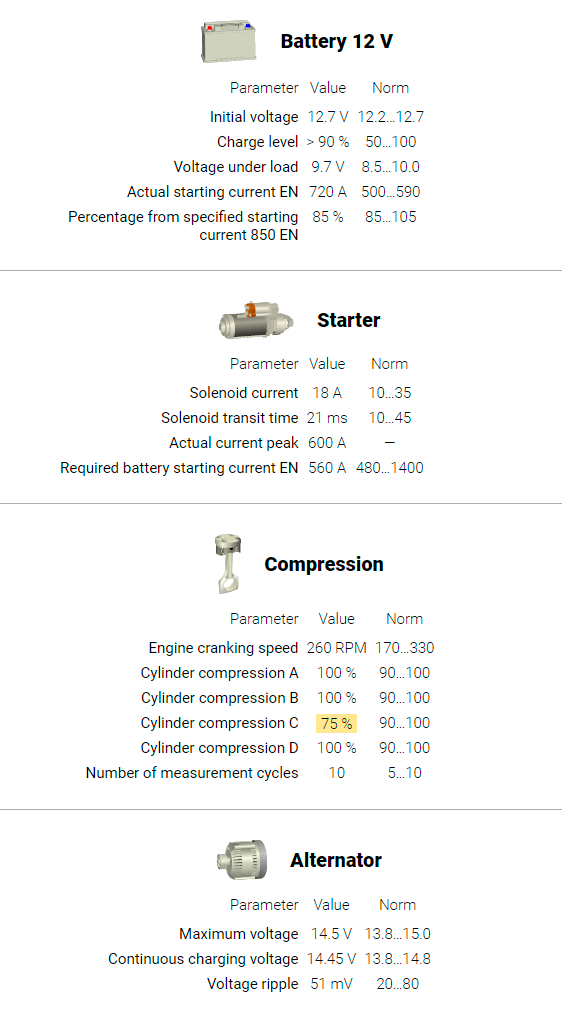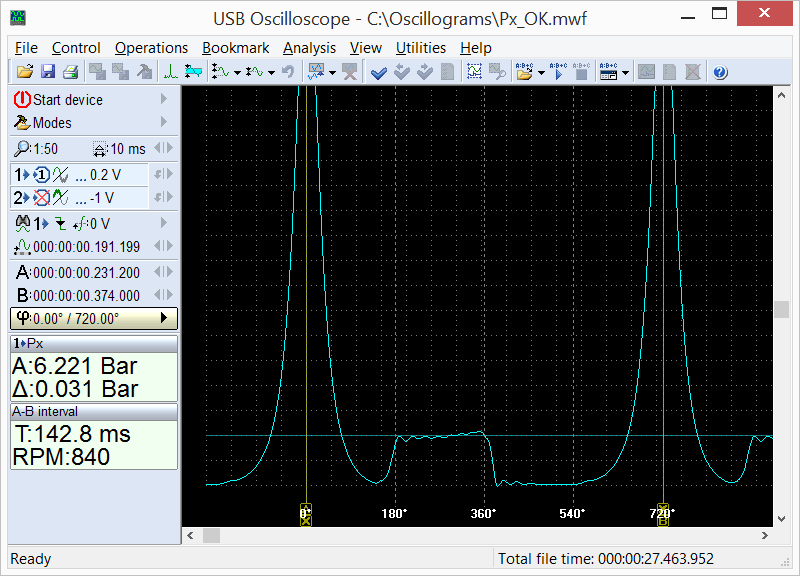It has been noticed that many technicians and mechanics of all ages and skill levels show a clear reluctance to use oscilloscopes in diagnostics. Perhaps this is because the oscilloscope is thought to be difficult to use, and the measurements obtained with it are difficult to understand. But is it?
Yes, this was true until recently. But everything in this world is changing, and the era of new technologies is coming. Oscilloscopes are now available with a built-in automatic signal analyzer that provides results in a convenient and understandable way.
Let's look at simple signals obtained with an oscilloscope.
Testing the battery, starter and alternator
There are several ways to diagnose the vehicle starting and charging system, none of which will give you a way to visualize what's going on in the system the way an oscilloscope can.
Consider an example obtained from a car with a known good battery and charging system.
Here is the waveform:

Even experienced technicians don't want to waste their time understanding this signal. Although this waveform contains a lot of useful information.
Here is the result of automatic processing of such a signal:

Impressive?
Moreover, the software makes a diagnosis and describes the detected faults.
Detection of mechanical failures
Diagnosing engine misfires is the problem we spend the most time on.
It is sometimes necessary to disassemble engines to find the root cause of some misfires if relative compression and other tests done in the usual way do not give useful results.
Now, we have a way to "see" pressure changes inside the cylinders almost as soon as they happen, eliminating the need to disassemble the engines.
Here is a graph of the pressure in the engine cylinder:

This signal was recorded on a gasoline engine, where a pressure transducer was installed instead of a spark plug.
Let's analyze this signal. Here we can easily find the TDC point.
Well, that's probably all...
And this is how the result of automatic analysis of the pressure transducer signal will look like:

I showed only two examples that allow you to evaluate the diagnostic capabilities using an oscilloscope in just a few seconds.
You can learn more about these technologies here:
AUTOSCOPE TECHNOLOGY